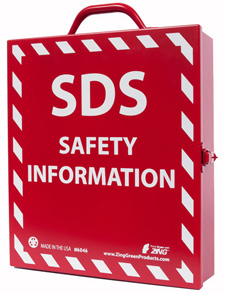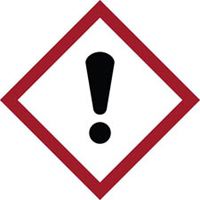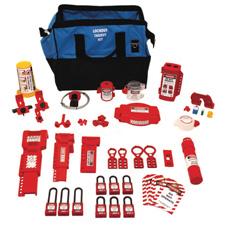 |
 |
| MSDS Topics |
Free Sites | FAQ's | Regulations | Glossary | Software | Suppliers |
| Books | Forum | Poll | Fun stuff | Quiz | Store | |
| MSDS and safety supplies | Search ALL our MSDS info | |||||
 | |||
 |
 |
 |
|
| Title: 09/21/2016 - Clarifications to CPL 02-02-079, Inspection Procedures for the Hazard Communication Standard (HCS 2012) | |
| Record Type: Memorandum | Standard Number: 1910.1200 |
OSHA requirements are set by statute, standards and regulations. Our interpretation letters explain these requirements and how they apply to particular circumstances, but they cannot create additional employer obligations. This letter constitutes OSHA's interpretation of the requirements discussed. Note that our enforcement guidance may be affected by changes to OSHA rules. Also, from time to time we update our guidance in response to new information. To keep apprised of such developments, you can consult OSHA's website at http://www.osha.gov
September 21, 2016
This memorandum provides information on issues raised since the publication of the Inspection Procedures for the Hazard Communication Standard (HCS 2012) compliance directive, CPL 02-02-079. This memo serves primarily to assist the field staff in clarifying the requirements of HCS 2012.

Your employees can stay informed and comply with OSHA regulations with SDS information stations and compliance products from Safety Emporium.
Question 1: Has OSHA changed the meaning of the phrase "exposed under normal conditions of use or in a foreseeable emergency?"
Response: The Agency's interpretation of that phrase has been stated previously and is applicable to HCS 2012. The following reiterates OSHA's interpretation:
The terminology "exposed under normal conditions of use or in a foreseeable emergency" excludes substances for which the hazardous chemical is inextricably bound or is not readily available, and, therefore, presents no potential for exposure. ("Exposure" includes accidental or possible exposure, see definition under paragraph (c) of the standard). Further, employees such as office workers or bank tellers who encounter chemicals only in "non-routine," isolated instances are not covered. However, an employee in a graphic arts department who "routinely" uses paints, adhesives, etc., would be covered by the HCS.
Question 2: When do all containers of hazardous chemicals shipped by a manufacturer or importer have to be HCS 2012-compliant labeled?
Response: If after June 1, 2015, the manufacturer or importer can demonstrate that it exercised reasonable diligence and good faith efforts to obtain hazard classification information from the upstream supplier(s) but for circumstances beyond its control, it has not received the necessary information to develop HCS 2012-compliant labels, it may continue to ship containers downstream provided the containers are HCS 1994-compliant labeled.
Even though a manufacturer or importer may have built up a substantial inventory, over time, containers of hazardous chemicals that were packaged for shipment prior to June 1, 2015 should become less of a labeling burden to manufacturers and importers as inventory is depleted. Therefore, all containers of hazardous chemicals shipped by a manufacturer or importer must be HCS 2012-compliant labeled by June 1, 2017.
Question 3: Are end-user employers required to re-label existing stock of containers?
Response: End users (i.e., employers) with existing stock or who have received shipped containers of hazardous chemicals with HCS 1994 labels (even after the June 1, 2016 final effective date) are allowed to maintain and use those containers with HCS 1994 labels. The end user must not remove or deface any chemical containers with HCS 1994 labels, unless the end user immediately marks the containers with workplace labeling. If an end user receives HCS 2012 labels from an upstream supplier for its existing stock, it is advisable to affix the HCS 2012 label over the HCS 1994 label, although it is not required. The end user is responsible for training its workers regarding the new label elements.
Question 4: Will OSHA allow an HCS pictogram for Hazards Not Otherwise Classified (HNOC) on a label or safety data sheet?

Get your GHS-compliant labels and signs from Safety Emporium.
Response: It is stated currently in CPL 02-02-079 that [t]he manufacturer, importer or distributor may include hazard symbols on the label or SDS for HNOCs as long as that symbol is not an HCS pictogram and does not contradict or cast doubt on the information that is required.
This information has been revised and is now replaced with the following guidance:
The manufacturer, importer, or distributor may include non-HCS/GHS hazard symbols on the label or SDS for HNOCs as long as that symbol does not contradict or cast doubt on the information that is required. OSHA considers use of any HCS pictograms, except the exclamation mark pictogram, to indicate the hazards of an HNOC as contradicting or casting doubt on the required information. OSHA considers the exclamation mark acceptable for HNOCs because it conveys more general hazard information. OSHA will permit use of the exclamation mark pictogram for HNOCs if the label also indicates that the pictogram is being used for a hazard not otherwise classified (e.g., the words "Hazard Not Otherwise Classified" or "HNOC" appear below the exclamation mark pictogram). However, the exclamation mark pictogram may only appear once on a label; if it already appears as a required pictogram for a classified hazard, it may not appear a second time as supplemental information for the HNOC.
Question 5: What ingredients must be listed in sections 3 and 8 of the safety data sheet?
Response: CPL 02-02-079 currently states that "[t]he list of constituents in sections 3 and 8 must be the same." This statement has been clarified and is replaced with the following guidance:
If a chemical ingredient is listed in section 3 of the SDS, it only needs to be listed in section 8 if there is a PEL, TLV or other occupational exposure limit (OEL). However, if a chemical ingredient is listed in SDS section 8, then OSHA would expect to see the same ingredient listed in SDS section 3. OSHA does not require that all chemical ingredients be listed in SDS section 8 - just those that are identified in section 3 and that have PELs, TLVs, and/or OELs.
Question 6: Is "Trade Secret" the only compliant wording allowed on a safety data sheet to indicate that an ingredient is being withheld per the trade secret provisions of HCS?
Response: In addition to the use of "trade secret," OSHA would also accept language such as "confidential," "confidential business information," or "proprietary" when indicating on an SDS that information is being withheld when that information is subject to trade secret provisions of HCS. See 77 FR 17474, 17738 (Mar. 26, 2012).
Question 7: What collaborative work is being done between OSHA and Health Canada to coordinate and align each country's positions on GHS?
Response: In June 2013, OSHA signed a Memorandum of Understanding with Health Canada formalizing the collaborative effort. Under this agreement, OSHA and Health Canada agreed to collaborate on efforts to implement the GHS in their respective jurisdictions with the goal of reducing differences, and to continue coordinating efforts in any future developments of the GHS.
In May 2015, OSHA announced that it will continue its partnership with Health Canada to align the United States and Canadian regulatory approaches regarding communication (labels and safety data sheets) and classification requirements for workplace chemicals through the Regulatory Cooperation Council (RCC). OSHA also is working with Health Canada to coordinate the adoption of future updates of the GHS, without reducing the level of safety or of protection to workers, to facilitate common approaches and implementation to minimize potential future variances between the two countries.

When working around hazardous sources of energy, OSHA requires the use of lockout devices like this one from Safety Emporium.
This collaborative effort between OSHA and Health Canada focuses on areas of interest where the HCS 2012 and Canada's Hazardous Products Regulation national hazard communication standard, Workplace Hazardous Materials Information System (WHMIS) 2015, affect both the U.S. and Canada when hazardous chemicals are shipped between the two countries.
Where an SDS element is required by Health Canada's WHMIS, and not by OSHA's Hazard Communication standard, it is permitted/allowed by OSHA, unless the information would contradict or cast doubt on the required information. Similarly, an SDS element that is required under HCS 2012 is permitted in Canada. An example applies to carcinogenicity. The HCS 2012 requires that if a chemical is identified as a carcinogen by OSHA, the International Agency for Research on Cancer (IARC), or the National Toxicology Program (NTP), then this information must be disclosed in SDS section 11, Toxicological information. Health Canada permits this information on the SDS even though under WHMIS the IARC and NTP listed carcinogens are not required to be disclosed on the SDS. However, if an SDS from Health Canada is sent to the U.S., the SDS must disclose information on any OSHA, IARC and NTP listed carcinogens.
There are a number of areas where HCS 2012 and Canada's WHMIS 2015 are different, and the two countries are working on ways to minimize these differences. The "variances" [Canadian term for differences] between our two countries may be found at:
http://www.hc-sc.gc.ca/ewh-semt/occup-travail/whmis-simdut/ghs-sgh/classification/hazardous-products-produits-dangereux/variances-ecarts-eng.php.
The above clarifications and information will be included in the next revision to the HCS compliance directive. If you have any questions regarding these or any other issues on the HCS, please contact Sven Rundman of my staff at rundman.sven@dol.gov or 202-693-2585.
cc: DCSP
The official, public domain, OSHA version of this document is available at http://www.osha.gov/pls/oshaweb/owadisp.show_document?p_table=INTERPRETATIONS&p_id=31800&p_text_version=FALSE